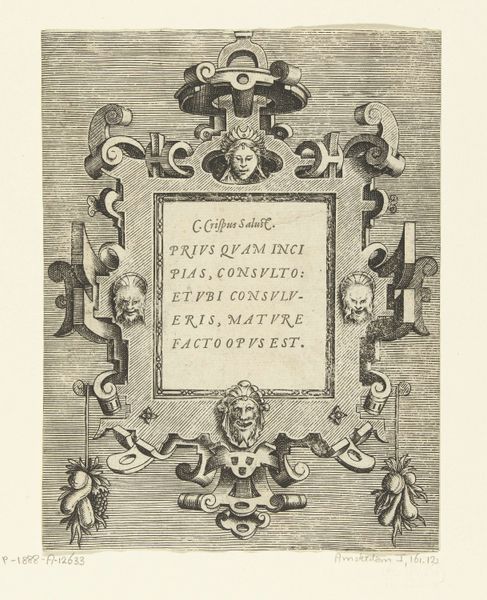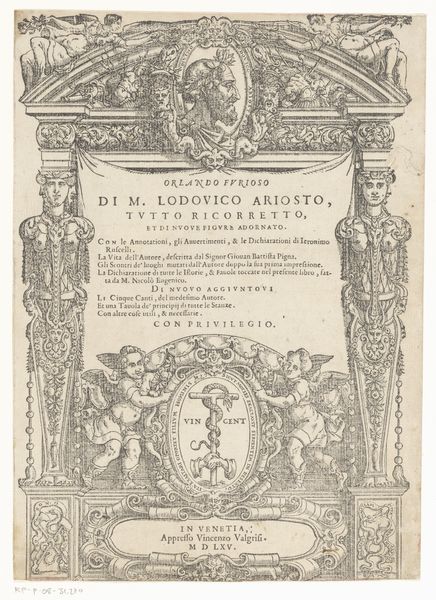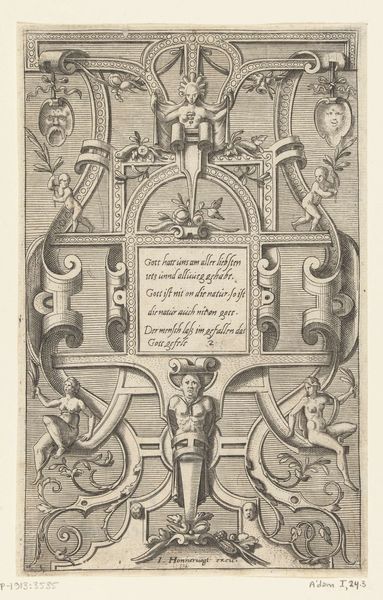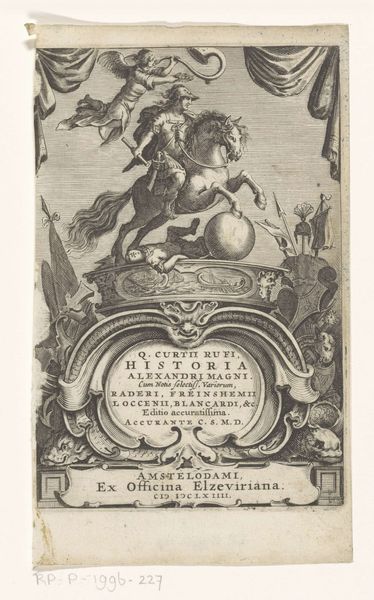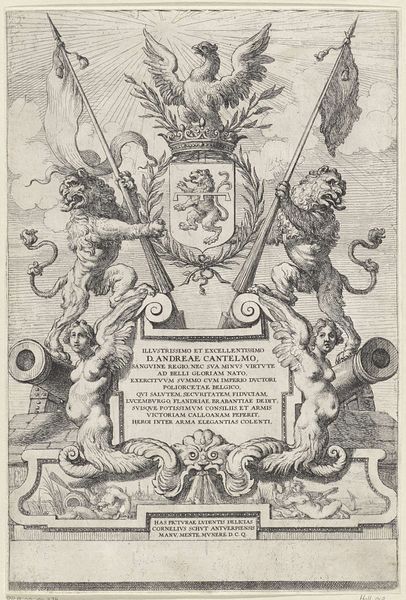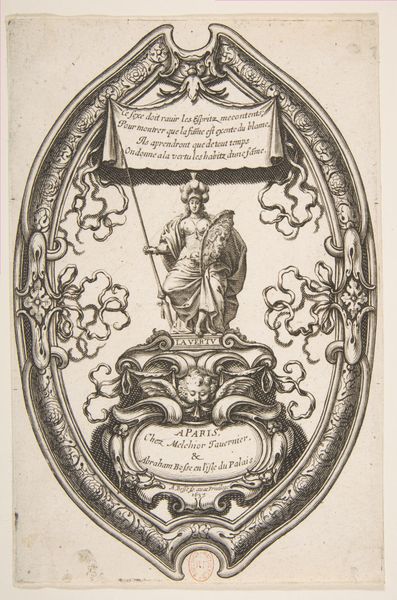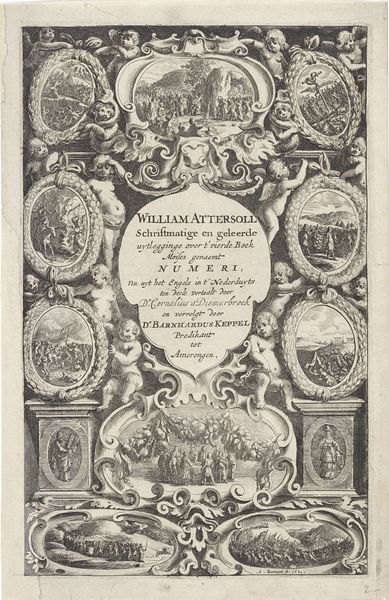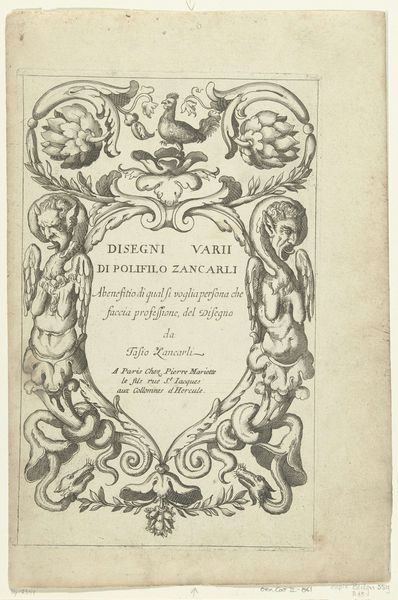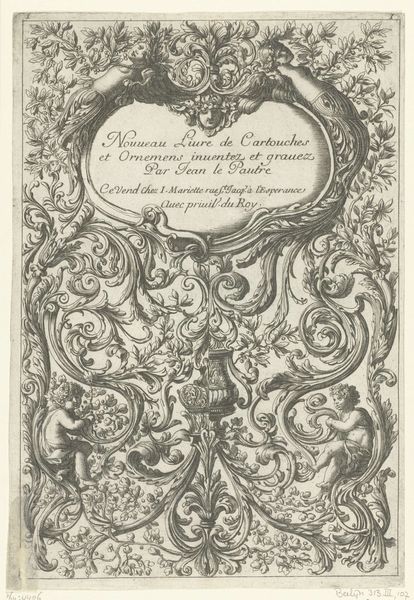
print, engraving
#
baroque
# print
#
old engraving style
#
history-painting
#
decorative-art
#
engraving
Dimensions: height 160 mm, width 118 mm
Copyright: Rijks Museum: Open Domain
Editor: This print, “Ornamenteel Cartouche” by Cornelis Meyssens, dates back to the mid-17th century. The ornate details give it a rather majestic, almost imposing feel. What symbolic layers do you observe within the composition? Curator: The immediate symbols are those of power: the imperial crown, the eagles, the crossed sword and scepter. These aren't merely decorative; they tell a story of authority and lineage, specifically of the House of Austria, which the Latin inscription indicates. Consider the emotional weight of these symbols in that era. What would the eagle, for example, represent to viewers? Editor: I guess strength, dominance... and perhaps a link to ancient empires? Curator: Exactly! The Roman Empire. Artists deliberately evoked these associations to legitimize power. And what about the cherubic faces intertwined with the other elements? They contrast so strikingly. Editor: They seem… almost unsettling amidst all the regalia, creating a sort of tension. Almost as if to suggest humility and the transient nature of earthly rule, or perhaps a humanistic aspect of what otherwise appears authoritarian? Curator: Interesting! These opposing images encourage close viewing and questioning, don't they? Each element carries an echo of cultural memory, inviting audiences to consider not just power, but its implications and limits. Editor: This exploration of visual language has completely transformed my understanding. It is far from just a decorative piece. Curator: Indeed. These aren't just images; they're containers of history and cultural meaning.
Comments
No comments
Be the first to comment and join the conversation on the ultimate creative platform.
